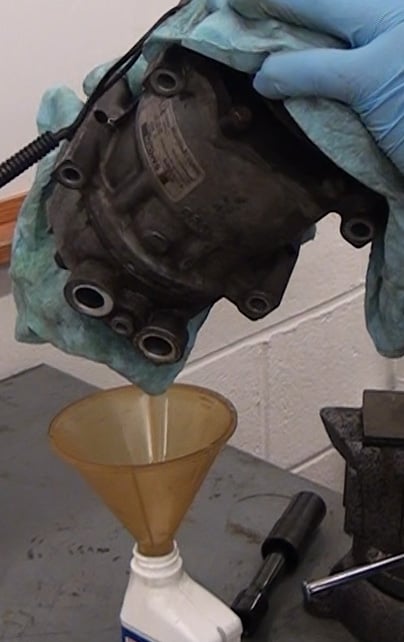Compressor Oil: When is it enough?
By Richard Hawkins, MACS Contributor
Last week’s article ended with the following sentence: “Next week, we will look at somewhat if’s that could have been encountered with this job and some options to address them.” So, it is time to do that.

If you Google A/C Compressor Oil Balancing, several different articles can be found that define it and though worded slightly different, they all mean essentially the same thing. And that is: To ensure that the amount of oil in the system is at the correct level.
But how do we know that a system has the correct amount in it to start with? The answer to that is: Unless you have just worked on a system that was dry and installed the correct amount of oil yourself, you do not know. So, when doing an oil balance, you are unfortunately faced with making educated assumptions about the oil amount in the system.
In the case of the Tahoe, it had low mileage and the system had been cooling fine prior to the accident. So, if no signs of oil leaks existed and the quantity of oil drained from the compressor had been in a range of about 2 to 3 ounces (or a bit more) it is likely that the amount of oil in the system was very close to the correct amount, which is 8 ounces.
But, what if only a half ounce (or less) had been drained from the original compressor? Does that mean that the system was low on oil? Answer: Not necessarily.
But you might ask: If the compressor should have had about 2 to 3 ounces in it, how could it only have a half ounce (or less) and the system have the full 8 ounces? Answer: If the system were running with a low charge of refrigerant, that could cause oil to collect in the evaporator and inhibit it is return to the compressor.
But if the system were cooling fine, wouldn’t a refrigerant charge that was low enough to inhibit oil circulation cause a decrease in cooling performance? Answer: Not necessarily. Orifice tube systems can cool just fine with less than full charges.
In fact, we did a controlled test several years ago where an orifice tube system was run back-to-back with a full refrigerant charge and then with a 25% undercharge and vent temperatures were recorded. The vent temperature only increased by .6 of a degree when running with the undercharge.
In addition, we drained the oil from the compressor and measured it after running the unit for an hour with full charge, then put the same quantity back in and ran it for 50 minutes with the 25% undercharge and drained it and measured it again. The results were startling. Running with the full charge, 1.8 ounces were drained. Running it with the 25% undercharge, only .5 ounces were drained. That is a reduction of over 70%.
Check back in next week and we will discuss options to address that condition. Do you like our blog content? Join MACS today as a member.